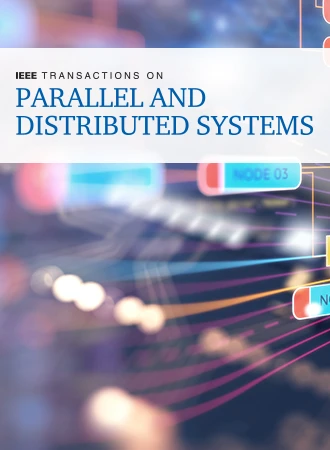分子势能面快速可扩展神经网络量子态方法
IF 5.6
2区 计算机科学
Q1 COMPUTER SCIENCE, THEORY & METHODS
IEEE Transactions on Parallel and Distributed Systems
Pub Date : 2025-03-12
DOI:10.1109/TPDS.2025.3568360
引用次数: 0
摘要
神经网络量子态(NNQS)方法在精确求解Schrödinger方程方面非常有前途,但它遇到了计算需求和缓慢收敛速度等挑战。为了解决高计算需求,我们引入了优化,包括跨样本KV缓存共享技术以提高采样效率,Quantum Bitwise和BloomHash方法以提高本地能量计算效率,以及混合精度训练策略以提高计算效率。为了克服收敛缓慢的问题,我们提出了一种二次量化的NNQS并行训练算法,以加速分子势面基本模型的训练。我们的方法在具有154个自旋轨道的系统的局部能量计算中实现了高达27倍的加速度,并且在H$_{2}$O$_{2}$势表面训练集上分别表现出98%和97%的强缩放效率和弱缩放效率。基于变压器的NNQS的并行化实现在各种高性能计算架构上具有很高的可移植性,为量子化学模拟提供了新的视角。本文章由计算机程序翻译,如有差异,请以英文原文为准。
Fast and Scalable Neural Network Quantum States Method for Molecular Potential Energy Surfaces
The Neural Network Quantum States (NNQS) method is highly promising for accurately solving the Schrödinger equation, yet it encounters challenges such as computational demands and slow rates of convergence. To address the high computational requirements, we introduce optimizations including a cross-sample KV cache sharing technique to enhance sampling efficiency, Quantum Bitwise and BloomHash methods for more efficient local energy computation, and mixed-precision training strategies to boost computational efficiency. To overcome the issue of slow convergence, we propose a parallel training algorithm for NNQS under second quantization to accelerate the training of base models for molecular potential surfaces. Our approach achieves up to 27-fold acceleration specifically in local energy calculations in systems with 154 spin orbitals and demonstrates strong and weak scaling efficiencies of 98% and 97%, respectively, on the H$_{2}$ $_{2}$
求助全文
通过发布文献求助,成功后即可免费获取论文全文。
去求助
来源期刊

IEEE Transactions on Parallel and Distributed Systems
工程技术-工程:电子与电气
CiteScore
11.00
自引率
9.40%
发文量
281
审稿时长
5.6 months
期刊介绍:
IEEE Transactions on Parallel and Distributed Systems (TPDS) is published monthly. It publishes a range of papers, comments on previously published papers, and survey articles that deal with the parallel and distributed systems research areas of current importance to our readers. Particular areas of interest include, but are not limited to:
a) Parallel and distributed algorithms, focusing on topics such as: models of computation; numerical, combinatorial, and data-intensive parallel algorithms, scalability of algorithms and data structures for parallel and distributed systems, communication and synchronization protocols, network algorithms, scheduling, and load balancing.
b) Applications of parallel and distributed computing, including computational and data-enabled science and engineering, big data applications, parallel crowd sourcing, large-scale social network analysis, management of big data, cloud and grid computing, scientific and biomedical applications, mobile computing, and cyber-physical systems.
c) Parallel and distributed architectures, including architectures for instruction-level and thread-level parallelism; design, analysis, implementation, fault resilience and performance measurements of multiple-processor systems; multicore processors, heterogeneous many-core systems; petascale and exascale systems designs; novel big data architectures; special purpose architectures, including graphics processors, signal processors, network processors, media accelerators, and other special purpose processors and accelerators; impact of technology on architecture; network and interconnect architectures; parallel I/O and storage systems; architecture of the memory hierarchy; power-efficient and green computing architectures; dependable architectures; and performance modeling and evaluation.
d) Parallel and distributed software, including parallel and multicore programming languages and compilers, runtime systems, operating systems, Internet computing and web services, resource management including green computing, middleware for grids, clouds, and data centers, libraries, performance modeling and evaluation, parallel programming paradigms, and programming environments and tools.
 求助内容:
求助内容: 应助结果提醒方式:
应助结果提醒方式:


